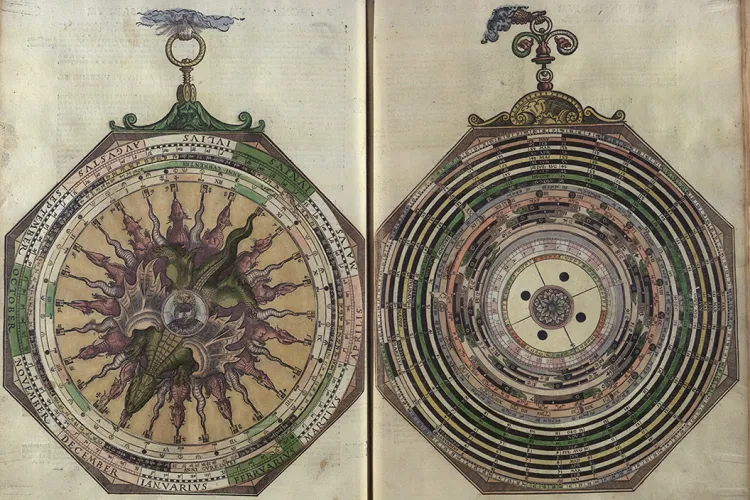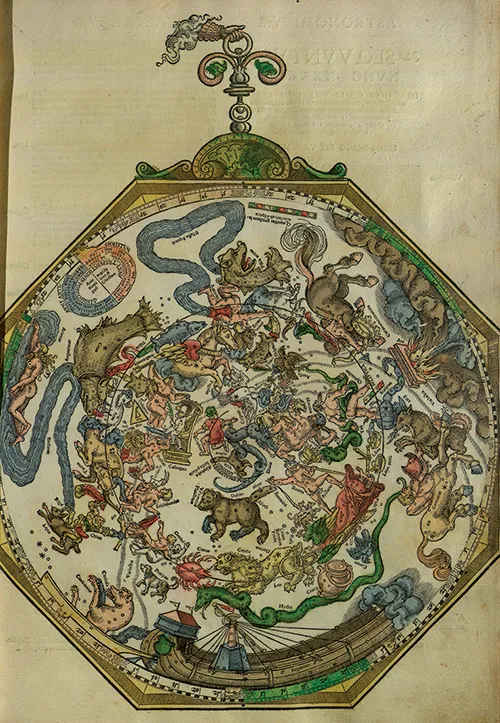Rare Book a New Model of the Universe

One peculiar aspect of the Astronomicum is the use of volvelles, paper wheels attached to a page that rotate independently and combine to create astrolabes (above).
Housed in the McCabe Library’s Rare Book Room, the Astronomicum Caesareum is a visually stunning astronomical work from the Renaissance. It was printed in 1540 by Peter Apian (also known as Petrus Apianus), a German printer and mathematician at the University of Ingolstadt.
Apian dedicated this work to Emperor Charles V, and was later appointed the court astronomer. He created the Astronomicum to be an astronomical instrument or manual that explains how to use astrolabes to determine the placements of the planets.
Written just before Copernicus proposed his new model of the universe in 1543 that placed the sun at its center with the other planets revolving around it, Apian based this book on the earlier Ptolemaic theory with Earth as the stationary center of the universe. Apian, a designer of astronomical instruments, included a separate section at the end of the book that contains both astronomical observations and illustrations of various instruments. Approximately 100 copies of the work still exist in collections around the world.

The Astronomicum contains hand-colored woodcuts throughout. The most unusual and intricate physical aspect of the book is the numerous volvelles. A volvelle is a paper wheel attached to a page that rotates independently. In this work, the volvelles are used to create astrolabes, many of which consist of up to five volvelles working in tandem, creating an instrument that actually functions like an analog astronomical computer. This “computer” can be used to predict events such as solar and lunar eclipses, along with the position of the sun and stars. Many of the volvelles have colored string markers coming out from their centers, which originally had seed pearls mounted on the ends.
The work was donated to Swarthmore in 1973 by Elizabeth Wilcox Shickele, whose son Peter Schickele ’57 was a composer best known for his alter ego P.D.Q. Bach. Based on the existing bookplates, the book belonged at one time to Sir Thomas Brooke (1830-1908), who had a well-known collection at Armitage Bridge in Yorkshire, England. It was then in the collection of Stephen A. Ionides (1880-1943), an engineer who published an article on Peter Apian with his daughter Margaret Ionides Cochran (1912-1946). The book was likely given to Schickele by Hewitt Cochran, husband of Margaret Cochran, after Margaret’s death in 1946. Schickle’s bookplate has the year 1946 handwritten on it, and she included a note with the book that she was giving it in memory of Margaret.
Susan Dreher is visual initiatives and exhibitions librarian, and Amy McColl associate director of collection management and discovery, for McCabe Library.



